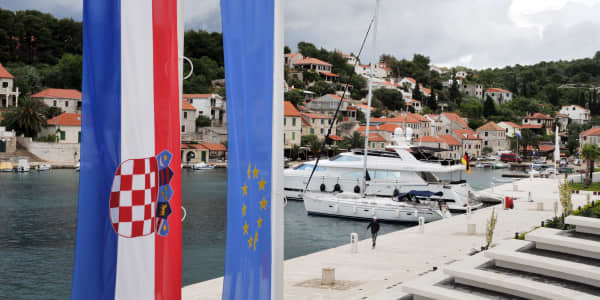In May 2004, many countries in central and eastern Europe (CEE) joined the European Union. This opened new and exciting prospects for growth as the countries found it easier than ever to access to foreign funding.
The so-called convergence play became exceptionally popular among investors who thought countries like Poland, Hungary or Czech Republic would then rush to enter the single currency club of the euro zone. As a result, the CEE region saw an unprecedented wave of funding coming via both official and private channels.
The EU budget was quite generous and foreign banks were also happy to extend credit in foreign currencies to local population. Many homebuyers in CEE asked themselves: Why should I take a mortgage in the expensive Polish zloty if in a few years we will be in the euro zone?
(Watch: Eastern Europe needs structural reforms)
Growth rallied and external imbalances worsened -- which turned out to be a recipe for a disaster when the global economic crisis struck in 2008-9. But since then the situation has been improving rapidly and I would risk it to say that CEE is now among the healthiest sub-regions of the emerging markets universe.
Think of it: vast current account deficits have all but disappeared and, while initially it was largely a function of a crash in domestic demand, there has been some improvement in exports too. The once-dreaded Bank of International Settlement tables showing huge dependency on foreign funding via the cross-border banking no longer look scary as deleveraging has been very swift.
And even growth outlook has improved as central banks slashed rates to unprecedented levels without really risking currency depreciations -- which would be difficult for many people who still have mortgages in euros or Swiss francs. BNP Paribas forecasts a significant acceleration in gross domestic product growth rates throughout the region in 2014. Granted, growth rates won't be anywhere near to what we witnessed in 2006-07 but then the whole world is growing slower these days, if at all.
(Read more: Hungary Cuts Interest Rate to Record Low)
International investors have also started appreciating the macroeconomic fundamentals and CEE currencies have been one of the best performers since the May tapering talk from the U.S. Federal Reserve started. Interestingly, the performance of currencies has been so strong that last week the Czech National Bank had to intervene for the first time in more than a decade to weaken the koruna.
Not all is rosy, however, and the countries across CEE need to work hard to maintain or even boost competitiveness.
This is particularly the case as there are new competitors that have emerged – including the so-called periphery countries of the euro zone, which are now fighting hard to attract investments.
(Read more: Thousands protest in Romania against shale gas, gold mine)
But the starting point as we go into 2014 is very good and we expect strong performance of the region to continue.
Bartosz Pawlowski is Global Head of Emerging Markets Strategy at BNP Paribas.




